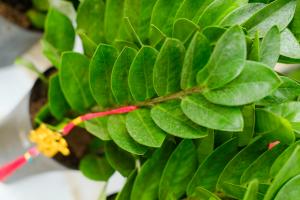Do Plant Roots Produce Oxygen in Water for Fish?
As a crucial part of the aquatic ecosystem, fish require oxygen to survive. However, unlike humans and other mammals, fish do not have lungs to extract oxygen from the air. Instead, they take in dissolved oxygen from water through their gills. And while oxygen is naturally present in water, the concentrations of oxygen in aquatic environments can vary widely, making it important to understand how oxygen is produced in aquatic environments. One potential source of oxygen in water is from plant roots.
The Role of Plant Roots in Aquatic Ecosystems
Plant roots play an essential role in aquatic ecosystems. Just as on land, plant roots in water absorb water and nutrients from the surrounding substrate. They are also capable of producing oxygen through photosynthesis, the process by which plants convert light energy into chemical energy. However, unlike their terrestrial counterparts, aquatic plants usually have to contend with lower light levels, colder temperatures, and lower levels of carbon dioxide, a key component of photosynthesis. These factors can limit the amount of oxygen that aquatic plants can produce, and consequently their contribution to the oxygen levels in water.
The Oxygen Production of Water Plants
In general, the rate of oxygen production by aquatic plants is influenced by a number of different factors. These factors include temperature, light intensity, carbon dioxide availability, nutrient availability, and water depth. In general, the warmer the water, the higher the rate of photosynthesis and oxygen production. Similarly, plants grown in shallow water environments, where they are exposed to higher light levels, are typically able to produce more oxygen. On the other hand, plants grown in deeper waters have less access to light, which limits their ability to produce oxygen. Nutrient availability can also affect the oxygen production of aquatic plants, with plants that have higher levels of nutrients typically producing more oxygen.
The Importance of Oxygen Production in Aquatic Environments
The production of oxygen by plant roots is an important factor in maintaining healthy aquatic ecosystems. As mentioned, fish require oxygen for survival, and oxygen concentrations in water can be influenced by a number of factors, including environmental factors such as temperature, as well as human activities such as sewage and agricultural runoff. Insufficient oxygen levels can lead to a variety of problems, including fish kills, algae blooms, and other aquatic imbalances. By producing oxygen through photosynthesis, plant roots can help maintain healthy oxygen levels in aquatic environments and promote a balanced ecosystem.
The Bottom Line
While plant roots can produce oxygen in water, their contribution to overall oxygen levels in aquatic environments is relatively small. Nevertheless, their ability to produce oxygen, as well as provide valuable habitat and food sources for fish, underscores their importance in maintaining healthy aquatic ecosystems. By understanding the factors that influence oxygen production in aquatic plants, we can better manage and protect these environments and the fish that depend on them.

 how many times do yo...
how many times do yo... how many planted tre...
how many planted tre... how many pine trees ...
how many pine trees ... how many pecan trees...
how many pecan trees... how many plants comp...
how many plants comp... how many plants can ...
how many plants can ... how many plants and ...
how many plants and ... how many pepper plan...
how many pepper plan...






























